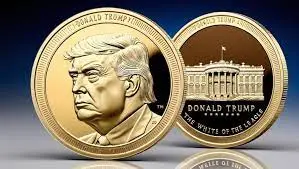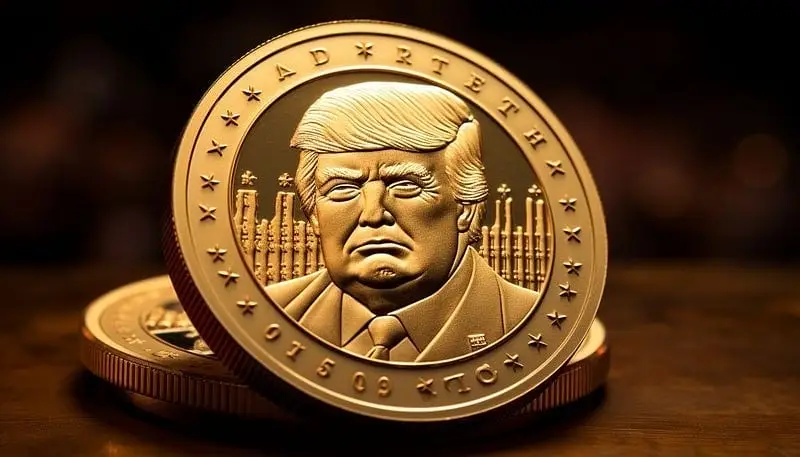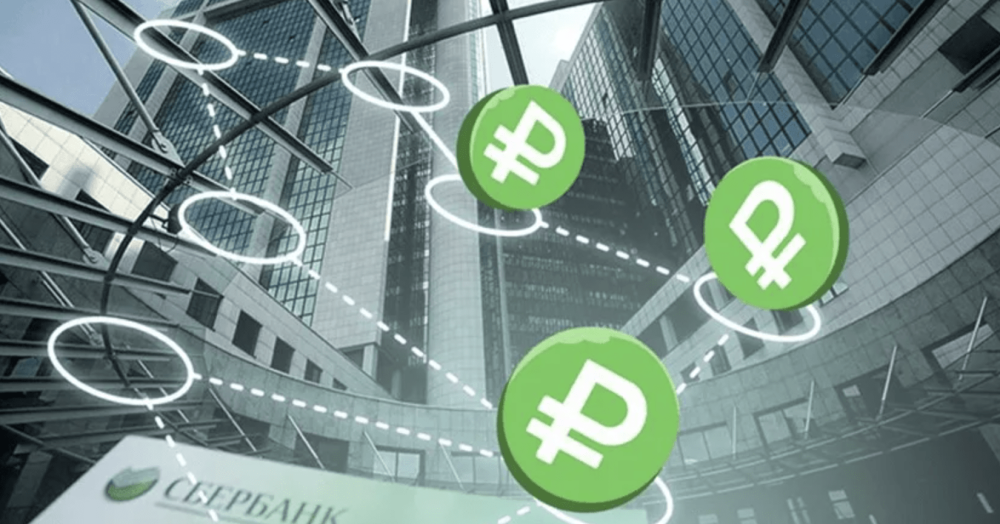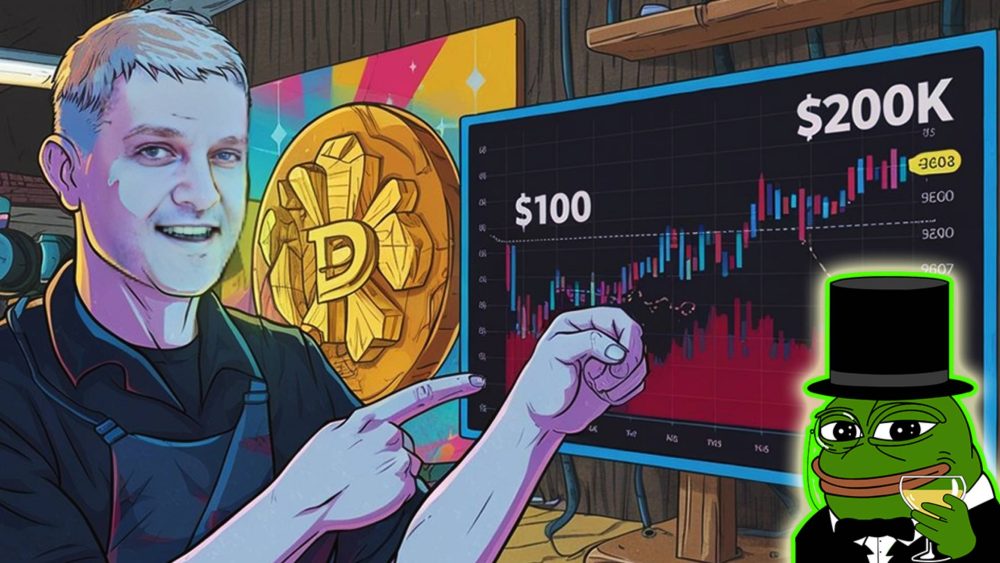Trump Coin is a striking example of a modern meme asset that combines elements of political symbolism and innovative technologies. TRUMP attracts the attention of investors and traders through effective branding, limited issuance, and an active marketing campaign. The asset has high volatility, which provides ample opportunities for speculative trading and also contributes to the creation of sustainable long-term strategies.
What is a Trump Coin
Trump Coin was launched in early 2025, and the project gained a lot of attention due to celebrity endorsements and the political context. The company’s story starts ambitiously, with a massive marketing campaign that quickly helped the company reach a market cap of over $10 billion. TRUMP is positioned as a meme token with bright symbols, focusing on the name and image of Donald Trump. The coin distribution strategy is that the majority of the coins remain with the developers, and the rest are gradually released into circulation throughout 3 to 5 years. This ensures a stable price and prevents sudden price increases.
Technical characteristics and infrastructure of the project
 Trump Coin is built on a high-performance blockchain that uses next-generation consensus algorithms that can provide high transaction speeds and minimal fees. The asset’s technological architecture includes the integration of smart contracts, which enables the automation of reward distribution and token burning mechanisms. The limited supply of 1 billion coins creates scarcity, which has a positive effect on investor demand.
Trump Coin is built on a high-performance blockchain that uses next-generation consensus algorithms that can provide high transaction speeds and minimal fees. The asset’s technological architecture includes the integration of smart contracts, which enables the automation of reward distribution and token burning mechanisms. The limited supply of 1 billion coins creates scarcity, which has a positive effect on investor demand.
The use of modern technologies guarantees:
- High transaction speed: transaction confirmation time is 10 to 20 seconds, which significantly speeds up the trading process.
- Low fees: transaction fees are only 0.05% to 0.15%, which allows you to minimize transaction costs.
- Integration with decentralized applications (dApps): the ability to use the token within DeFi projects, NFT platforms and payment systems.
- Security level: Multi-factor encryption, two-factor authentication and regular software updates minimize the risk of unauthorized access.
Partnership programs with major exchanges such as Binance, Coinbase Pro, Kraken, Huobi Global and others provide ample liquidity and fast order execution, which is an important factor for active trading.
Analysis of Trump Coin price and its trading dynamics
The price dynamics of the token are characterized by high volatility, which is typical for meme assets. After its launch, it grew rapidly, reaching peaks of $10 to $75 during the first few trading days. This dynamic is a result of the active participation of speculative parties and the influence of external economic and political factors.
Technical analysis based on RSI, MACD and support/resistance levels allows you to identify the optimal entry and exit points for your trades. In addition, the use of automated trading systems and algorithmic strategies improves the accuracy of order execution. Investors who use hedging strategies through options and futures contracts can reduce their risk of loss by 10-15% in the event of unfavorable market movements. According to analysts’ forecasts, the price dynamics of Trump Coin will depend on the activity of large investors (“whales”), changes in regulatory policies and public opinion. This requires constant monitoring of the market situation.
Trump Coin Trading Strategies
Token management requires the development of a comprehensive methodology that takes into account the characteristics and high volatility of tokens. One of the most important methods is day trading. By actively opening and closing positions during a trading day, you can profit from short-term price fluctuations. This strategy involves using stop-loss orders to limit losses and lock in profits. With proper position management, you can achieve an annual return of up to 15%.
Another approach is swing trading, which focuses on medium-term corrections. By opening positions for several days, you can profit from market dynamics by using support and resistance levels to determine entry and exit points. By exiting a trade when you have made a profit of 5-10%, you can limit risk and optimize profitability.
Algorithmic trading and copy trading are modern automation methods that allow you to copy successful strategies of professional traders. Using trading robots such as Cryptohopper simplifies the order execution process and minimizes the influence of human factors. This approach allows for a return of up to 12-15% per year, provided that the configuration of the automated system is strictly controlled.
Hedging using options and futures contracts protects a portfolio from sudden market fluctuations. Using options to lock in prices and selling futures to hedge long positions can reduce the risk of loss by 10-15%. These strategies are especially relevant in periods of high volatility to maintain capital stability and minimize financial losses.
Factors affecting the price and outlook of Trump Coin
The dynamics of tokens are influenced by both fundamental and technical factors. Political circumstances play an important role: public speeches by Donald Trump, political scandals, and changes in public opinion can cause sharp price fluctuations. Social media is becoming increasingly important in generating demand: viral memes, endorsements from well-known influencers, and active discussions about the asset in online communities all contribute to growing trading volumes.
General trends in the crypto market (optimistic and pessimistic sentiment) have a direct impact on the price of Trump Coin. Technical metrics, including transaction speeds on the Solana blockchain on which the token is based and low fees (typically between 0.05% and 0.15%), make the coin attractive to traders. Integration with major exchanges provides liquidity, and data from analytics platforms shows that the asset’s trading volume can grow by 20% to 25% annually under favorable conditions. The activity of large investors (“whales”) and institutional money flows also influence the price. Regulatory changes aimed at increasing the transparency and security of transactions reduce risks and contribute to strengthening investor confidence.
Conclusion
 Trump Coin is an original asset with brilliant symbolism and growth potential. Solana’s blockchain technology guarantees high transaction speeds and low fees, making token trading efficient. Real-world data confirms that the use of stop-loss orders, automated trading systems and social media analytics contribute to stable returns of up to 15-20% per year.
Trump Coin is an original asset with brilliant symbolism and growth potential. Solana’s blockchain technology guarantees high transaction speeds and low fees, making token trading efficient. Real-world data confirms that the use of stop-loss orders, automated trading systems and social media analytics contribute to stable returns of up to 15-20% per year.
 en
en  ru
ru  de
de  ar
ar  es
es  nl
nl  hi
hi  fr
fr  it
it  pt
pt  el
el 










